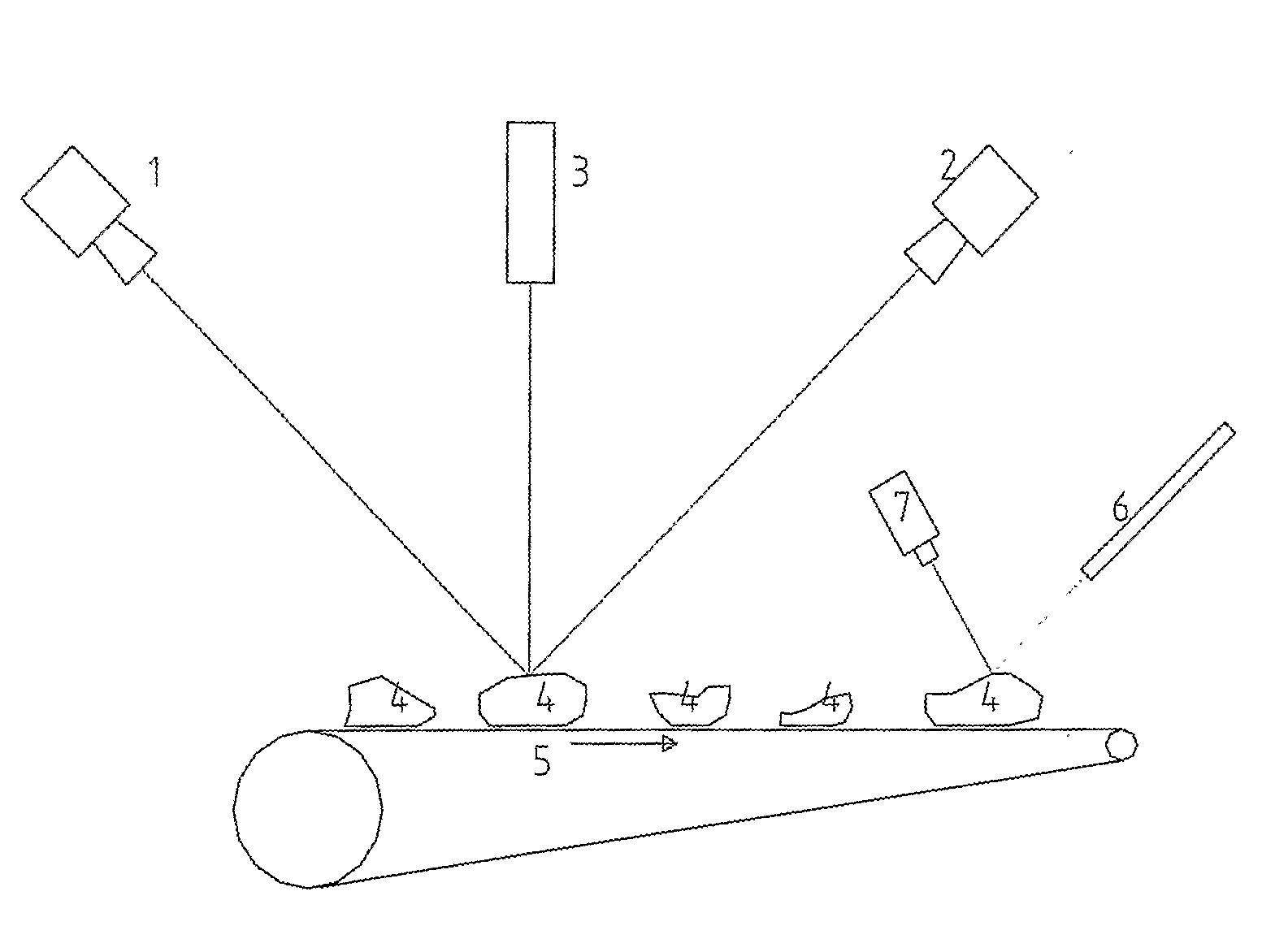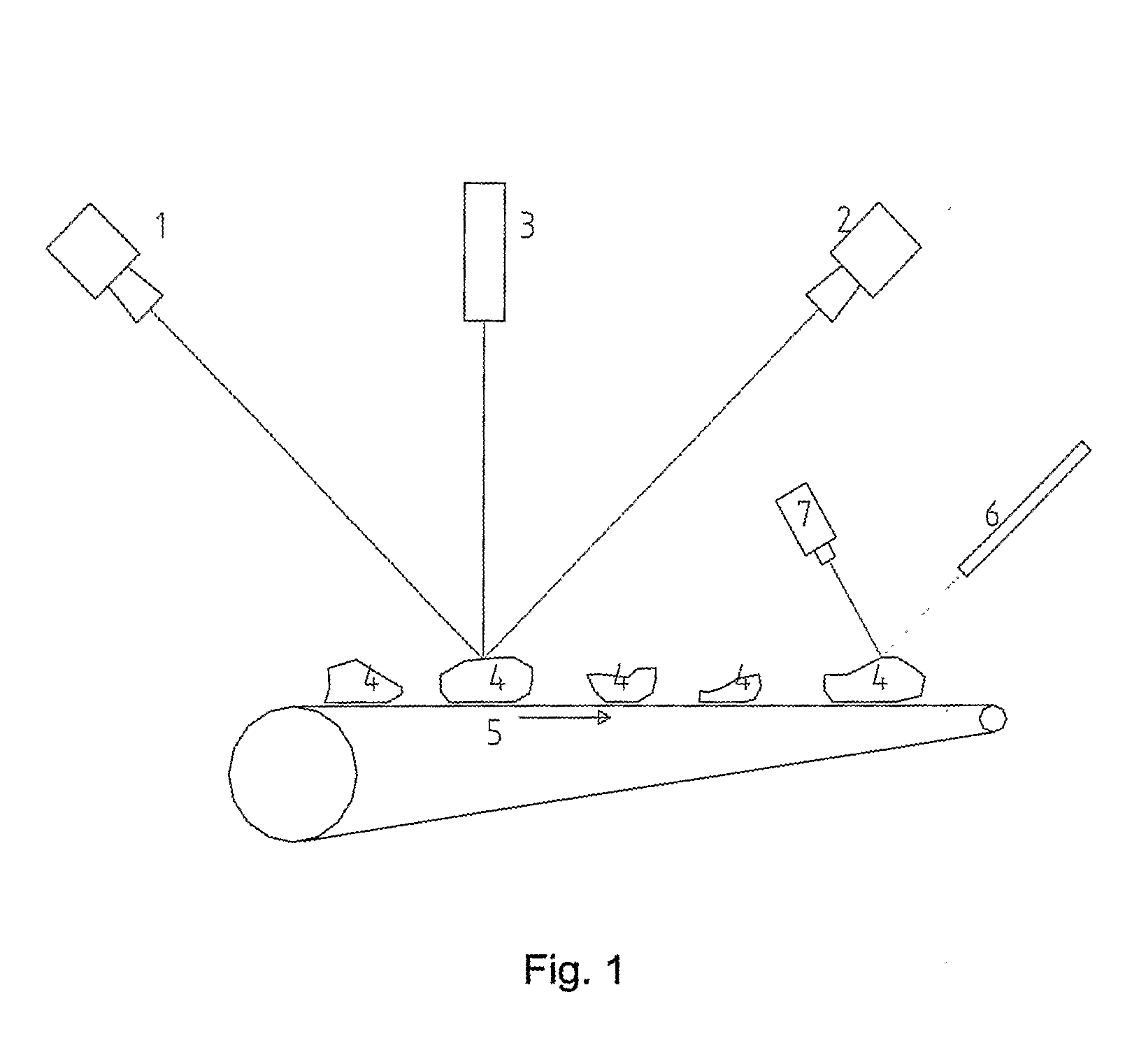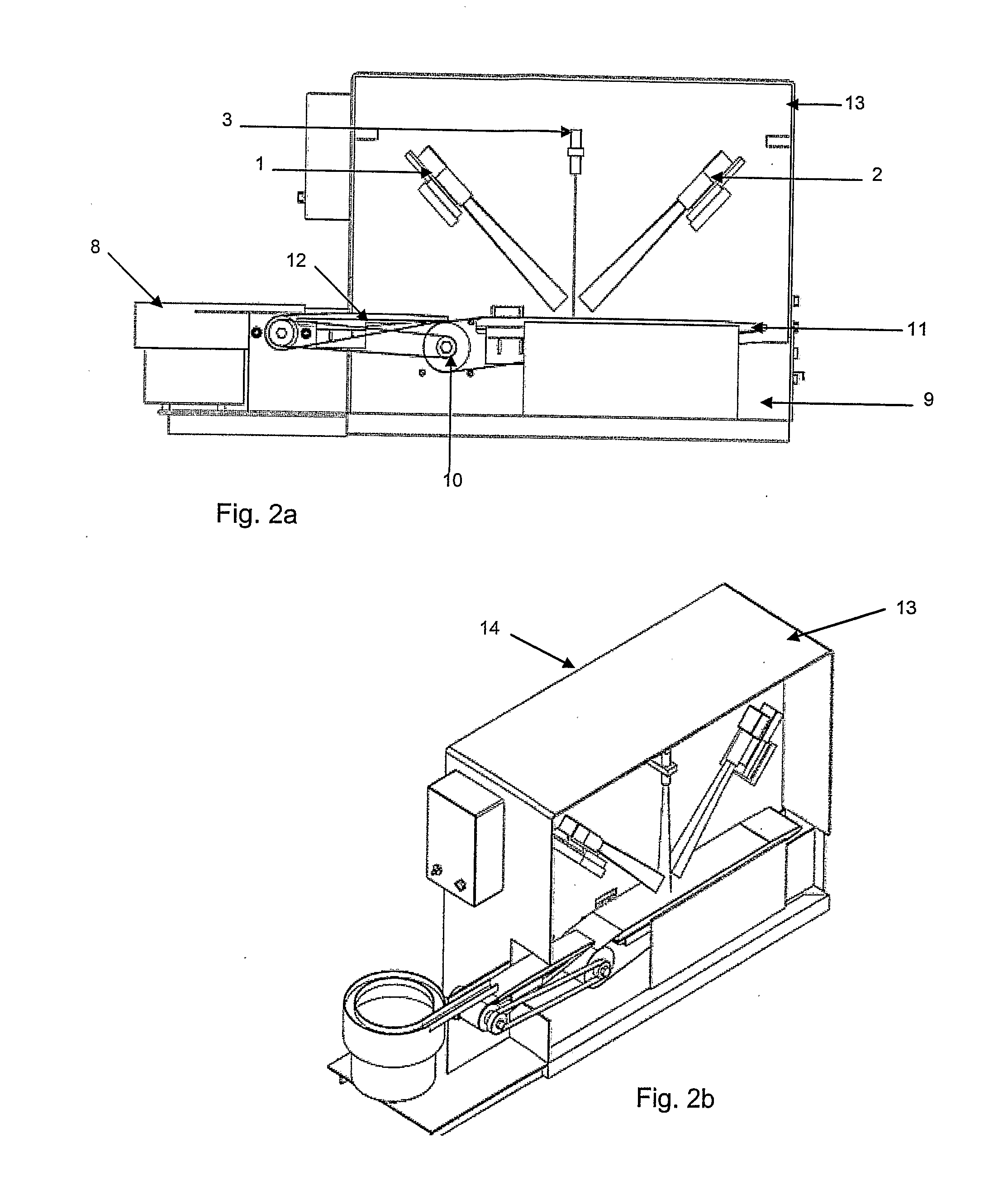Apparatus and Method For Analysis of Size, Form and Angularity and For Compositional Analysis of Mineral and Rock Particles
a technology of mineral and rock particles and composition analysis, applied in the field of equipment and methods for mineral and rock particles analysis, can solve problems such as tedious semis
- Summary
- Abstract
- Description
- Claims
- Application Information
AI Technical Summary
Benefits of technology
Problems solved by technology
Method used
Image
Examples
example 1
Guide to Program for Dart of Size, Form and Angularity Analysis
[0070]The program structure is shown diagrammatically in FIG. 2. The following section briefly describes the role and functionality of sections of an initial version of a software embodiment.
[0071]Calibration of camera 1. A single frame is captured. For each column in the image, the brightest pixel (theoretically corresponding to the centre of the laser line) is located. When the pixel intensity exceeds ‘min intensity’ (used to distinguish between pixels attributable to the laser line and pixels corresponding to background light levels), ‘Triangulation algorithm subVI’ is called to calculate height at that point. A 1D array of height values is thus generated for the frame. The median value is taken to be the height of the belt. This is used as a reference value in all subsequent triangulation calculations.
[0072]The median value is taken because the majority of the columns in the image frame should be covered by the laser...
example 2
Angularity Analysis of Rock Particles
[0107]A total of 200 rock particles in the 8-32 mm size range were scanned using the laser triangulation system and analysed by the ellipsoidal morphology algorithm. Prior to the analysis, the particles were visually assessed and graded manually according to the Powers scale by geologists at two independent institutions.
[0108]FIG. 6 shows a scatter plot of the pseudo-volume lost due to the morphological opening against the visually (manually) assessed angularity for each particle, represented in accordance with the Powers scale as a number between 1 (very angular) and 6 (well rounded).
[0109]The first observation is that the deviation in the results is very large and appears to increase with angularity. This can be confirmed by plotting the standard deviation of the percentage volume lost under each category against the Powers number, as shown in FIG. 7b. It can be seen that the standard deviation increases at a fairly uniform rate as angularity i...
example 3
Petrographic Analysis
[0110]A method was developed to obtain information about the texture of analysed rock samples. The texture is mostly influenced by the sizes of individual crystals and therefore gives information that can be important for classification, as the crystal-size of rocks can vary depending on their type.
[0111]In short the method works as follows: It starts by locating the sample in a two-dimensional image taken by a digital camera (e.g. CCD or CMOS type industrial camera) located above the object (e.g. after the laser light and camera assembly used for the angularity assessment) and selecting a part from its middle, in order to evade background and shadows. The picture is then converted into a grayscale image and the number of graytones reduced to between 2 and 25. Experiments were made with different numbers of colors and this interval, 2-25, seemed to give good results, and seemingly the best results were in the interval 4-8.
[0112]After the reduction of colors, eac...
PUM
 Login to View More
Login to View More Abstract
Description
Claims
Application Information
 Login to View More
Login to View More - R&D
- Intellectual Property
- Life Sciences
- Materials
- Tech Scout
- Unparalleled Data Quality
- Higher Quality Content
- 60% Fewer Hallucinations
Browse by: Latest US Patents, China's latest patents, Technical Efficacy Thesaurus, Application Domain, Technology Topic, Popular Technical Reports.
© 2025 PatSnap. All rights reserved.Legal|Privacy policy|Modern Slavery Act Transparency Statement|Sitemap|About US| Contact US: help@patsnap.com



